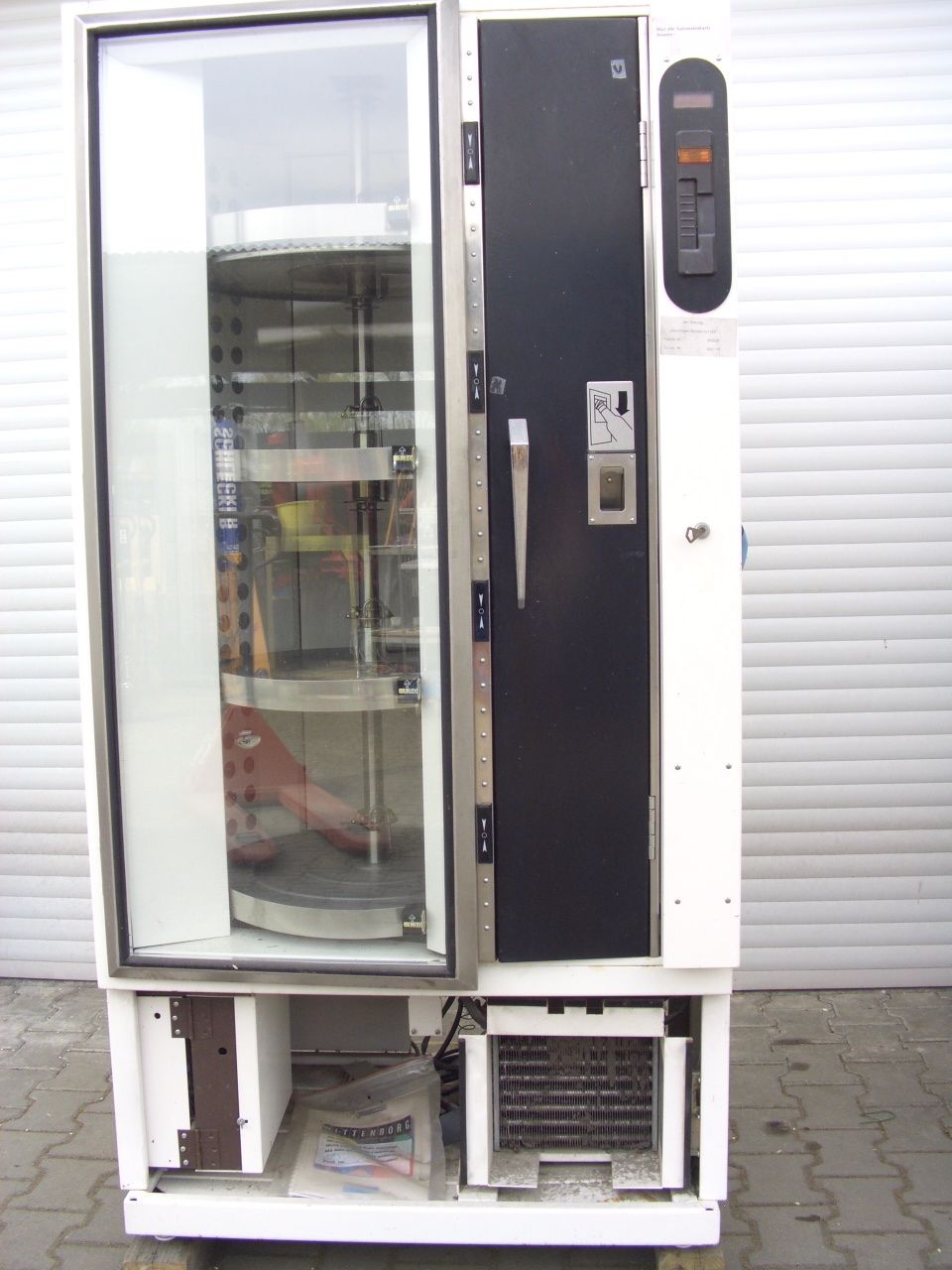In the beginning of 2015, the local Freifunk project really started gaining some traction, breaking through the 100 node mark in just a few months. But the people running those nodes are basically still all technical people who don’t mind figuring out the right kind of router to buy and flashing some custom firmware onto it. You have to give the Freifunk people some credit, though: The whole process is well-documented and quite hassle-free. But it’s still not something someone like my parents would do just because they want to support the project.
So, one day, we bought a bunch of WR841-ND routers on the cheap and preloaded them with the Freifunk firmware. A day later, we had sold all of them… to members of our hackerspace and their families (some picked up a couple to redistribute them). But then we thought: Wouldn’t it be great if we could do the same in a less obscure place than a hackerspace? Thus, the idea of building a Freifunk veding machine was born, at least as a joke. (Honestly, I’m less than certain that anyone who wouldn’t have come by the hackerspace anyway will actually use it, but that’s not a reason not to do such a thing)
That idea floated around in our collective minds for a while and broke through again one evening and we started sketching ideas how the mechanics of such a machine would have to look like, when another member, who hadn’t participated in the discussion, casually announced that he had simply gone to ebay and bought a pair of disused vending machines for just 100 EUR.
Fast forward a week: After realizing how heavy those damn things can be (we had to pick them up ourselves), we were now proud owners of a Wittenborg BM 440 bottle machine and a Wittenborg FM 4000 snack machine:
We’ve only tested the FM 4000 so far, as it is the more suitable candidate for building a router vending machine. The machine came with a cooling unit, which we removed right away, because we didn’t need it anyway and feared that it might just blow up if we plug the machine in. Surprisingly, the machine works perfectly aside from that. (There are some minor mechanical issues in some of the drums, but they should be fixable)
The machines are certainly more than a little rough-hewn (the maintenance log indicates they were last serviced some time during the nineties), but some members indicated that they are willing to put some work into improving the aesthetics.
Next up: Reverse engineering the controls, because the payment unit in the FM 4000 has been removed (the BM 440 doesn’t accept cash at all, but has a custom system based on magnetic stripe cards) and finding a compatible replacement would be difficult (and paying 20 EUR, the price of one router, in coins is tedious anyway). Also, the current system is based on a 8051-like chip that certainly isn’t suited to today’s “attach everything to the internet” hype.
Luckily, both machines came with extensive manuals (which are only slightly damaged and badly mold-ridden in the case of the FM 4000) which also include block-level schematics, so building a custom control system shouldn’t be too difficult.

